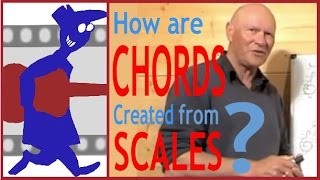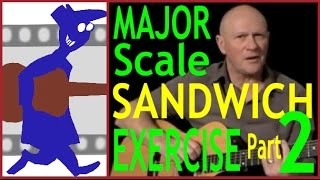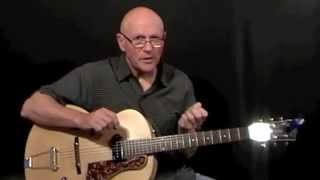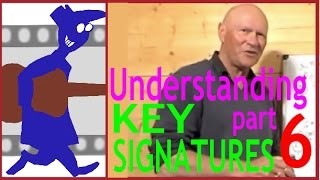Understanding Key Signatures - Part 6
Published on 26 January 2016
For more information from the source site of this video please visit: http://secretguitarteacher.com/youtube/advanced/theory/gkUXXya9aEw/84145580-understanding-key-signatures-6.php
In Part 1 we completed the circle of fifths.
Now in this traditional representation, it is common practice to show the circle of fifths moving round in a clockwise direction on the outer rim of the circle and then add the circle of fourths moving round the opposite way on the inside of the circle like this:
If we look closely at this diagram we can see why this makes perfect sense.
Notice that both circles start at the top with the key of C and that this is the one place in the circle where both the inner and outer segment agree absolutely. They both contain the keys of C major and its relative A minor -- the neutral keys in that they require neither sharps nor flats.
But if we step round to the left we can see that this agreement between the inner and outer segment does continue in one sense.
In the outer ring we have the major key of E# major. The inner ring has the key of F major. These are enharmonic keys -- they look different, but they sound exactly the same. E# is another way of saying F. Likewise the relative minors in this segment C##m and Dm -- these are the same keys in terms of how they sound, they're just spelt differently!
Continuing on round you can see that this enharmonic equivalence holds good for each segment. You might like to pause the video at this stage just to check that out.
So in our earlier lesson on the circle of fourths and flat key signatures, we progressed as far as the key of Cb major with its seven flats. That's as far as we took it but, just as we did with the sharp keys in the circle of fifths, it's now time to continue the circle of fourths and see where this takes us.
So let's head over to the whiteboard.
Here's our key of Cb
Key signature for Cb MajorBattle Ends And Down Goes Charles' Father - Seven flats
Here's the scale notesLet's name them
Cb Db Eb Fb Gb Ab Bb Cb
And number them
12345678
Now we take the fourth note Fb and use that to build our next key..
We'll keep the Key signature for Cb Major for now
Battle Ends And Down Goes Charles' Father - Seven flats
Here's the scale notes from Let's name them
Fb Gb Ab Bb Cb Db Eb Fb
Now, once again we'll use the process we used right back at the start of the first lesson we did on this -- we'll check the intervals between these notes against the MAJOR SCALE formula..
Fb T Gb T Ab T Bb S Cb T Db T Eb S Fb
What we need is TTSTTTS so where does it go wrong?
It should be no great surprise to discover it goes wrong at note FOUR just like it always does in the circle of fourths...
How can we fix it?
Well if you have followed these last few lessons closely, you might guess.
The answer is that we take note four which is Bb and add another flat to it. This makes it B double flat...
Bbb
And we do the same in the key signature at the start of the line
Again, it's worth mentioning that the chances are, you will never have encountered double flats in normal written music. They do occur occasionally, but they are extremely rare.
But again, I want to stress that they come in quite handy when you are working on music theory exercises.
Now what does Bbb sound like? The answer is exactly like the note A.
When you flat a note you lower it a half step or a semitone. So if you do that to B twice you make it sound exactly like A. But why can't we simply call it A?
Because we already have a note in this key called A something -- we have A flat. We can't have a situation where some A notes are played as Ab and some as A -- it's just too messy! So in the key of Fb, if we want to hear a note sound like A we just write a B note and the key signature tells us to play it as an A!
So the key of Fb major has eight flats...
Let's move on...
From the key of Fb major we go up four steps...
Fb Gb Ab Bbb Cb Db Eb Fb
1 2 3 4
And we use Bbb to build our next scale
Here're the scale notes
Let's name them
Bbb Cb Db Eb Fb Gb Ab Bbb
And check the pattern...
Bbb T Cb T Db T Eb S Fb T Gb T Ab S Bbb
And we come up with the same problem again at note FOUR and solve it by adding a flat to the Eb Ebb
 IMPROVISATION: Creating Scale Contrast
IMPROVISATION: Creating Scale Contrast
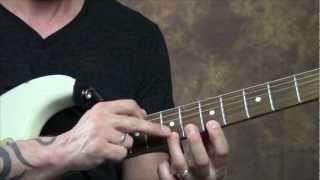 Learn to Bend Your Guitar Strings the RIGHT Way
Learn to Bend Your Guitar Strings the RIGHT Way
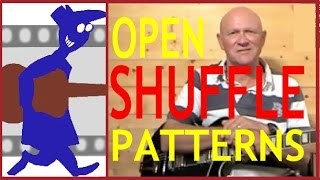 Open Shuffle Patterns in Other Keys
Open Shuffle Patterns in Other Keys
 Quick Start First Guitar Lesson - Guitar Lesson Fo...
Quick Start First Guitar Lesson - Guitar Lesson Fo...
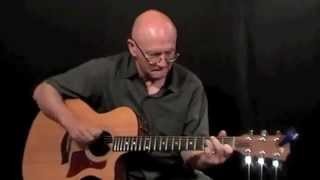 Guitar Chord Voicings and Inversions - How to Use...
Guitar Chord Voicings and Inversions - How to Use...
 3 Intermediate Fingerstyle Rhythm Patterns - Guita...
3 Intermediate Fingerstyle Rhythm Patterns - Guita...
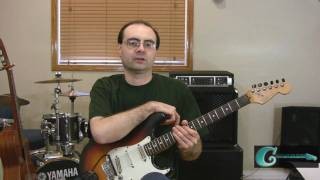 Guitar String Bending Technique
Guitar String Bending Technique
 4 Tips for Smooth Chord Changes
4 Tips for Smooth Chord Changes
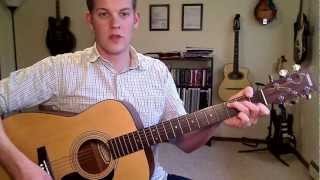 How to Embellish a C Chord
How to Embellish a C Chord
 SRV Rake Technique
SRV Rake Technique

